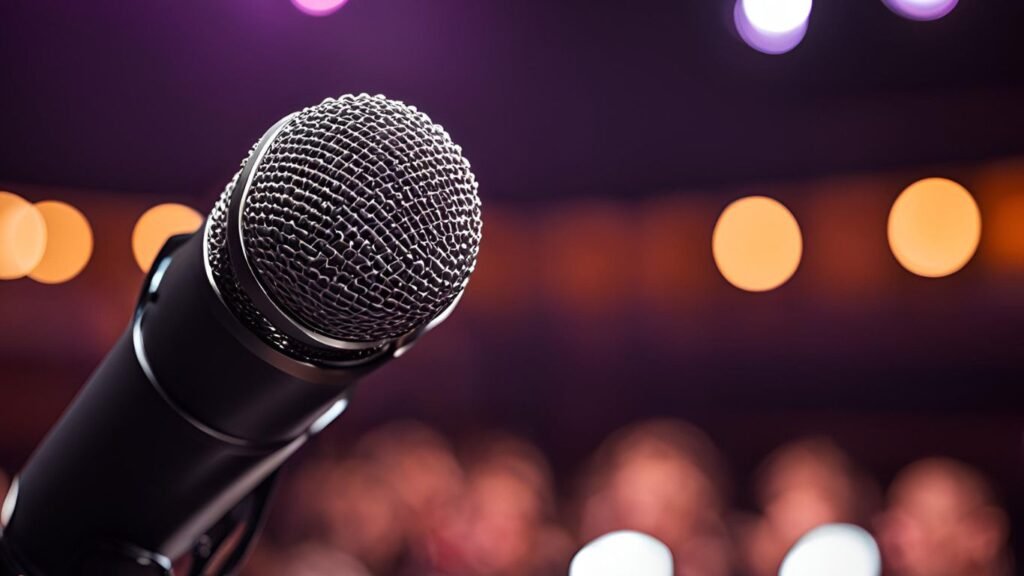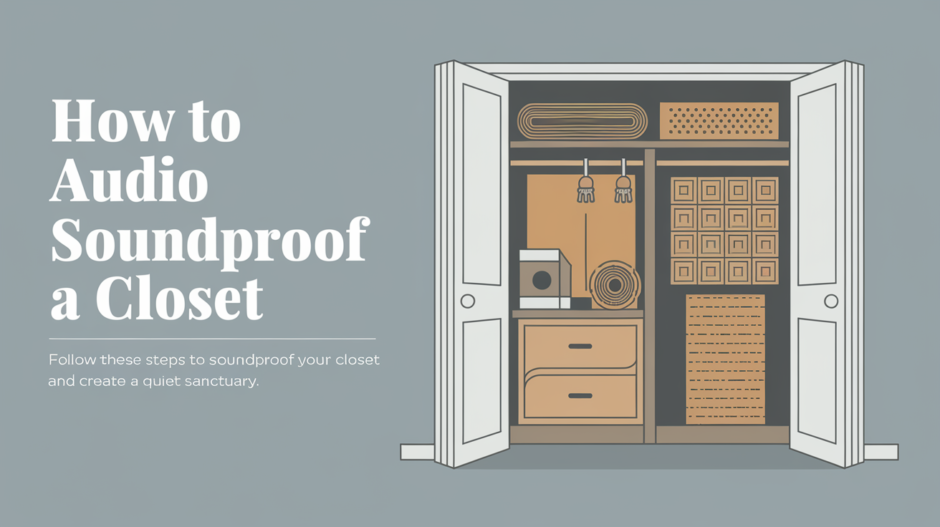You can save your voice on a high-quality live vocal microphone if you invest the time. Great mics allow your vocals to really come through in the real world and make you sound great live. Whether you’re singing a ballad or leading a rock band, we have a microphone for you.

We’ve compiled a guide on 10 of the Best Live Sound Vocal Microphones, including their features, benefits, and usage scenarios, to assist you in making your selection.
Types of Microphones for Best Live Sound Vocals
Before we start our reviews, you’ll need to understand the two primary types of live microphones: dynamic and condenser.
Dynamic Microphones:
- More powerful, capable of dealing with very high sound pressure levels (SPL)
- Great for performances on stage
- The pickup pattern will be cardioid or supercardioid
- Resistant to feedback
Condenser Microphones:
- Better clarity but usually pricier
- Require phantom power
- Less responsive to feedback in real-life situations
- Perform at exceptional levels of detail even in lower frequencies
What to Look for in a Live Vocal Microphone
Here are the main factors to consider while searching for a live vocal microphone:
- High durability: The mic should be able to withstand the rigors of touring and extended use.
- Sound quality: It should be clean and natural to make your voice shine through.
- Noise reduction: A solid live mic reduces noise (especially in a high-end environment).
- Price: Find a good compromise between performance and price.
Top 10 Best Live Sound Vocal Microphones
In this list, we have many of the best live sound vocals under $300, so make sure you check them out:
1. Shure SM58
Shure’s iconic SM58 microphone has been the go-to mic for decades. It’s well-received for being tough and sturdy and has been employed by millions of artists in all genres. The SM58 can stand up to the rigors of live sound and is especially efficient at rejecting feedback.
- Features: Dynamic cardioid polarity, built-in spherical wind and pop filter
- Pros: Durable, inexpensive, great feedback rejection
- Cons: Not as clear as high-end microphones
- Suitable for: General live use, all vocalists — advanced and beginners
This microphone is quite cheap and only costs $99 which is a snatch.
2. Sennheiser e835
The Sennheiser e835 delivers clean, punchy vocals. With a comfortable response and a pure tone, this mic highlights the brightness of a singer’s voice even in a room full of distractions. It’s also moisture-resistant, and great for energetic performers.
- Features: Cardioid polar pattern, high-end response
- Pros: Clear, moisture-resistant, very affordable
- Cons: Can produce some handling noise
- Perfect for: Vocal articulation in live bands
This amazing little microphone from Sennheiser only costs $99 at Amazon.
3. Audio-Technica AE6100
The Audio-Technica AE6100 offers high-quality feedback rejection and is great for challenging environments. The hypercardioid polar pattern picks up your voice and cancels out sounds from the sides and back.
- Features: Dynamic, hypercardioid polar pattern
- Pros: Good feedback rejection, robust design
- Cons: Not as lightweight compared to other mics
- Suitable for: Noisy stages, feedback-laden environments
This microphone leans towards the more expensive side but it is also a great piece of equipment, you can buy it for $189 directly from their site.
4. AKG D5
Known for being durable and tough, the AKG D5 is ideal for frequent touring. Its supercardioid pickup allows it to isolate the voice and filter out background noise, and the metal construction handles the inevitable stress of the live circuit.
- Features: Durable, supercardioid polar pattern
- Pros: Extremely robust, good midrange
- Cons: Not as wide a frequency range as some models
- Best suited to: Touring musicians, rugged performance requirements
This speaker from AKG costs $119 which is pretty reasonable.
5. Electro-Voice ND76
The Electro-Voice ND76 is designed for loud vocal performances. It effortlessly handles high SPL for rock/metal singers. Even in noisy conditions, the ND76 delivers accurate, balanced sound.
- Features: Full-range, cardioid polar pattern, high SPL handling
- Pros: Great for loud vocals, crisp highs
- Cons: Larger than competitors, less sensitive
- Suitable for: Rock and metal singers
You can find this microphone at Amazon for a price tag of $129!
6. Shure Beta 58A
The Shure Beta 58A is the upgraded version of the SM58, with improved clarity and output sensitivity. The supercardioid polar pattern makes it particularly isolation-friendly, and popular among lead singers on the move.
- Features: Dynamic, supercardioid polar pattern
- Pros: Higher sound quality, more output
- Cons: More expensive than the SM58
- Fits: Lead singers, performers who move around
Shure is known to make some pretty slick microphones and the SM58 is one worth investing in. It retails at $169 which you can get directly from their website.
7. Rode M1
The Rode M1 is a durable, low-cost dynamic microphone. The quality is long-lasting, and the sound is excellent for its price point, making it great for first-time singers.
- Features: Dynamic, cardioid polar pattern
- Pros: Low price, sturdy, solid sound
- Cons: Not as sophisticated as higher-end mics
- Best for: Students, budget-conscious performers
You can buy this Rode microphone directly from Amazon and it will cost you $99.
8. Telefunken M80
The Telefunken M80 offers a clean, transparent voice, making it an ideal instrument for singers looking to let their true vocal tone come through. It’s also favored by singers seeking a live, more studio-like atmosphere.
- Features: Dynamic, supercardioid polarity
- Pros: Clear highs, full presentation
- Cons: Relatively expensive
- Recommended for: Singers looking for a raw, natural vocal tone
This is one of the most expensive microphones in this list and it will cost you $249. You can get cheaper microphones that do exactly the same as the Telefunken M80.
9. Beyerdynamic TG V70d
The Beyerdynamic TG V70d excels at preventing bleed, and thanks to its supercardioid polar pattern, this product has been proven to work well for stage noise isolation. It’s a great option for musicians working in loud venues who want to separate their voices from the rest of the sound.
- Features: Dynamic, supercardioid polar pattern
- Pros: Good noise cancellation, sturdy construction
- Cons: A little heavier than usual
- Recommended for: Loud environments, good vocal isolation
This will cost you $219.99 which is on the high end of microphones.
10. Neumann KMS 105
The Neumann KMS 105 is a high-end condenser microphone with excellent sound quality. It’s incredibly bright and detailed but requires phantom power and is more fragile compared to dynamic microphones, making it perfect for studio settings and quieter performances.
- Features: Condenser, super cardioid polar pattern
- Pros: Superb sound, amazing resolution
- Cons: Expensive, requires phantom power
- Ideally suited for: Professional singers, premium live shows
This amazing microphone is very expensive and it will cost you $729!, whether or not it’s worth it many people love it.
How to Pick the Perfect Mic for You
Choose a microphone based on your vocal style, live setup, and budget. Dynamic mics are usually the preferred choice for live sound due to their durability and noise rejection.
However, condenser mics, such as the Neumann KMS 105, offer unparalleled accuracy and transparency for smaller events. Also, don’t forget about the polar pattern—cardioid mics are great for general usage, and supercardioid mics are best for isolating voices in crowded environments.
Conclusion
There are many excellent vocal microphones available that will be perfect for all performers. The Shure SM58 or the premium Neumann KMS 105 should give you the ideal sound to help enhance your voice and leave your listeners with the clearest recording.
Whether it’s the Shure SM58 or the premium Neumann KMS 105, choosing the right microphone can make your voice performance even better and make the audience hear you more clearly.
If you want to perform with better performance or stage effects, you can add some something with musical elements in your clothes. In this way, your overall outfit is very suitable for the atmosphere of the scene, which can make the audience more immersed. Custom Enamel Pins are a good choice.
Custom music pins will not only have a personal touch but also add icing on the cake to your live performance, making it more ornamental and more attractive to the audience.
Hopefully, this article has helped you figure out the best live sound vocal microphones you should be using.
If you enjoyed reading this article make sure you check out WAV vs MP3: Which one is better?



